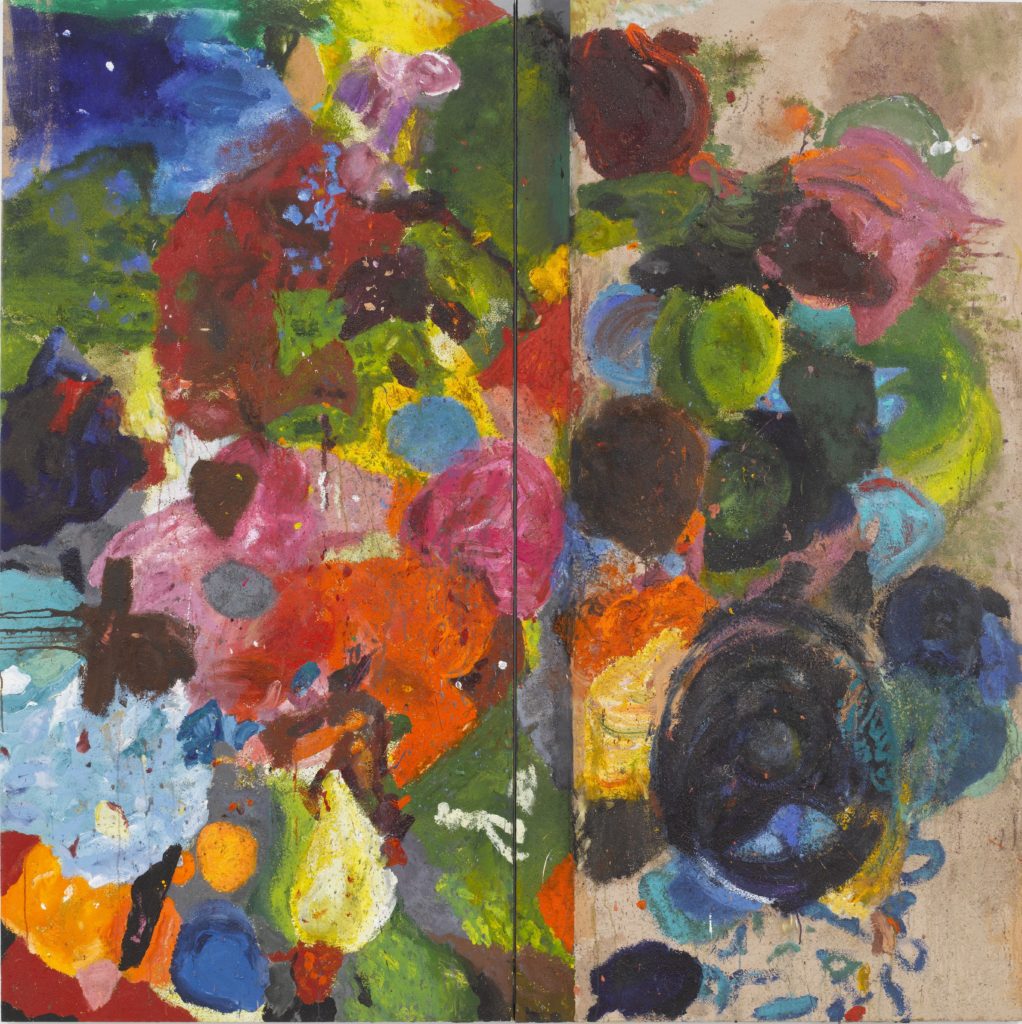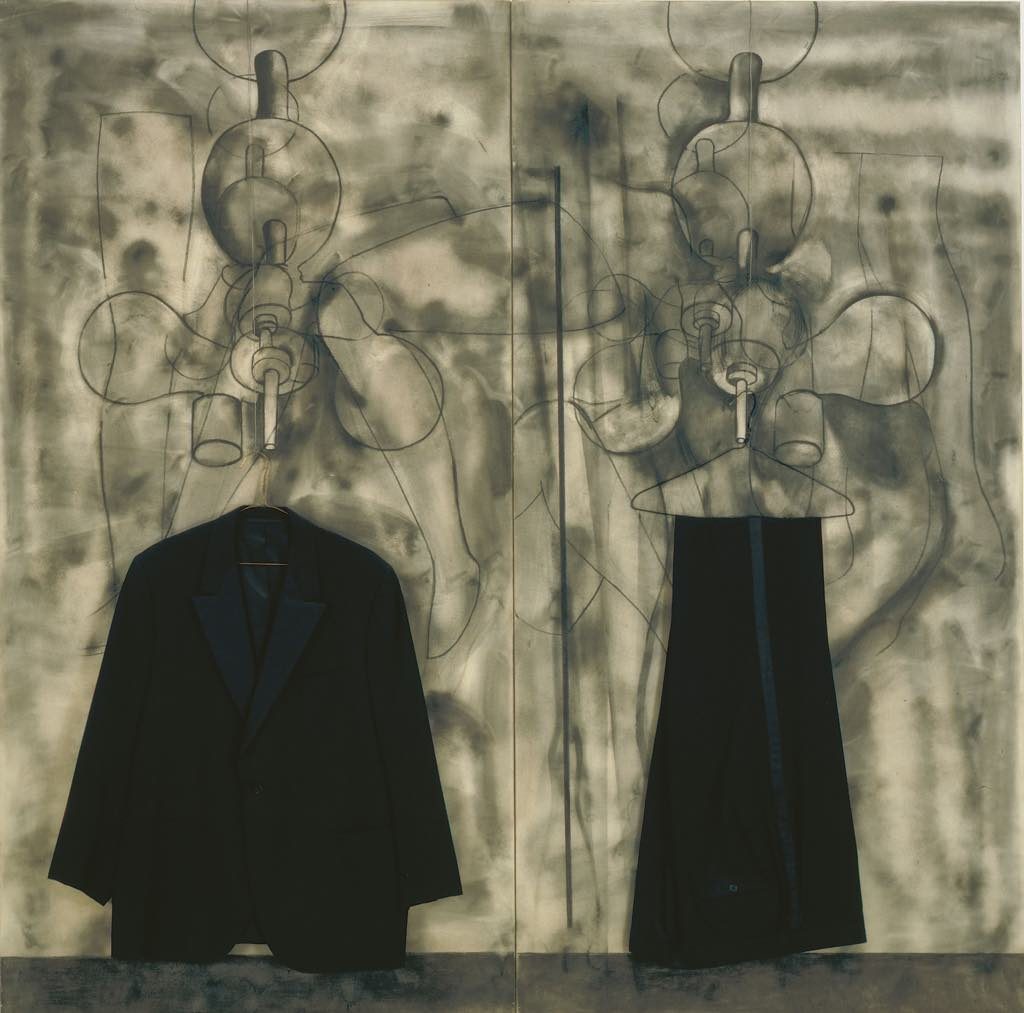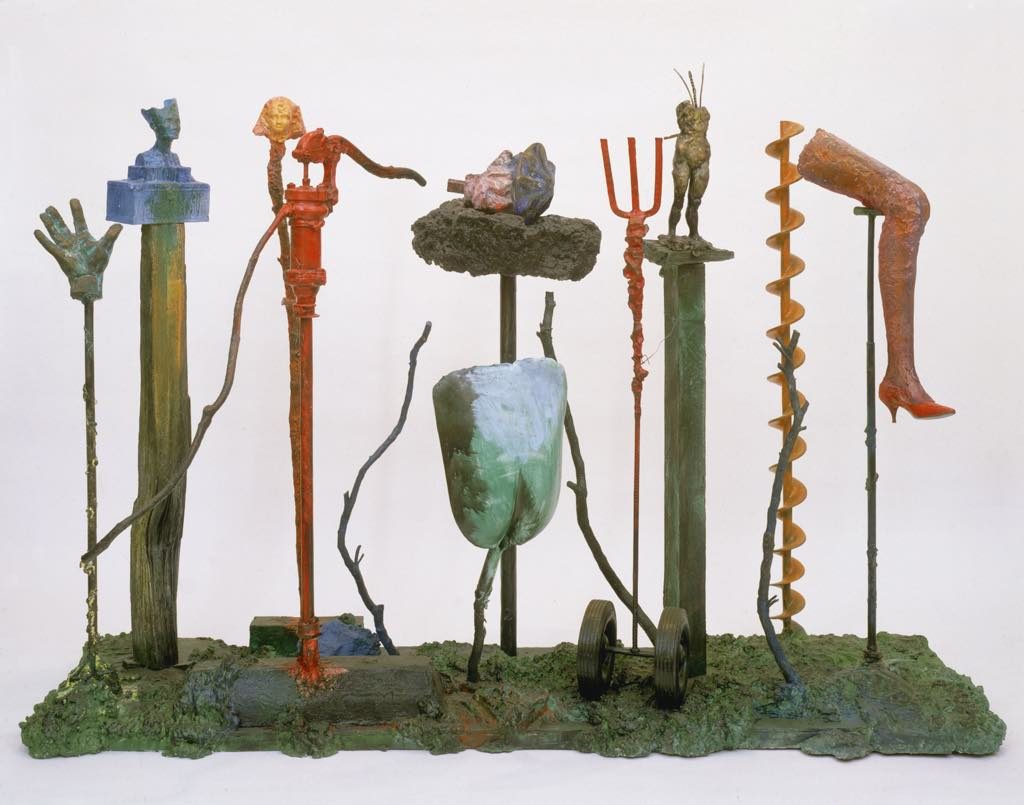
I didn’t know much about the work or life of American artist Jim Dine – just a memory of lots of depictions of hearts from some exhibition many years ago – until I saw this sweet little show at the Centre Pompidou.
The occasion is Dine’s donation of 28 of his works to the museum. It turns out that he has spent a great deal of time in Paris and feels “a personal and cultural debt to France” for contributing to his aesthetic and providing him with inspiration.
The show opens with nine poems, in French and in English, “about me in Paris,” scrawled in gigantic letters on the walls and smudged and painted over. “My method of writing is not too different from my method of painting,” he is quoted as saying. “I collect imagery and put it together and take it apart. It’s a collage method.” Several books of his poems have been published and are on display here.
While the poems are evocative, I was more taken by the paintings and sculptures. There weren’t many of the hearts I remembered; instead I found a group of works that somehow form a coherent whole even though they vary widely in style, form, content and media, a feat few artists achieve.

The overtly autobiographical aspects of Dine’s work add to its interest. The heart is one of those self-representational symbols, but there are others, including an empty bathrobe (shades of Rodin’s sculpture of Balzac’s bathrobe) and other clothing, Pinocchio (straight out of a childhood nightmare), birds and skeletons.

When Dine does depict hearts in these works, there is nothing sentimental about them. In “Nancy and I at Ithaca (Straw Heart)” (1966), for example, the heart is made of hay. In “Glade of Color” (2011), it almost disappears within a colorful abstract painting. In the beautifully painted “Putney Winter Heart No. 9 (Poulenc)” (1971), the heart is split in half by a real saw attached to the canvas.

Tools are another recurring theme in his work (his grandfather owned a hardware store), whether painted and assembled into sculptures, attached to canvases, or encircling the waists of his rough-hewn wooden Venus statues on tool belts.
I heartily recommend this small exhibition, even more so because the commentaries on the works are not only intelligent but are also translated into English.
While Dine’s work often investigates the dark side of the psyche (he went through many years of depression), it is also full of humor and joyous color — he’s an artist with heart.
Favorite